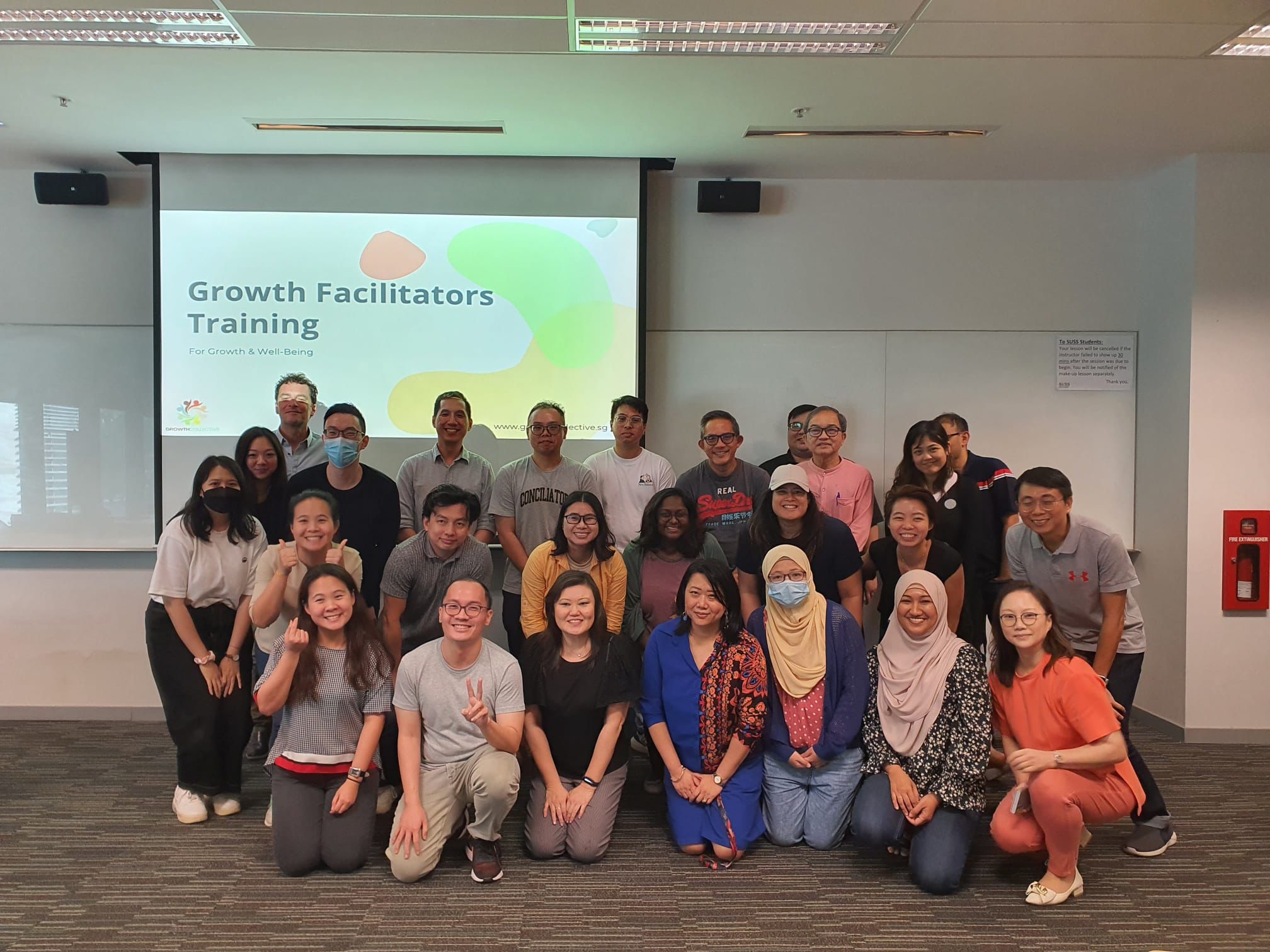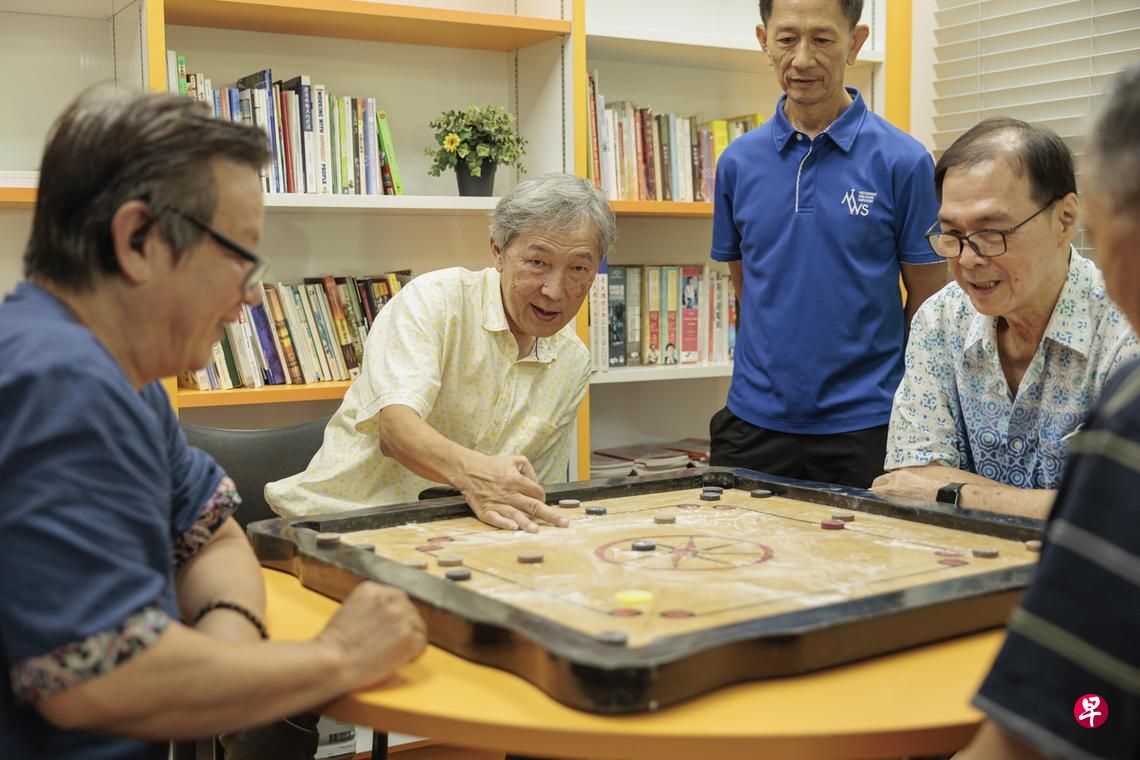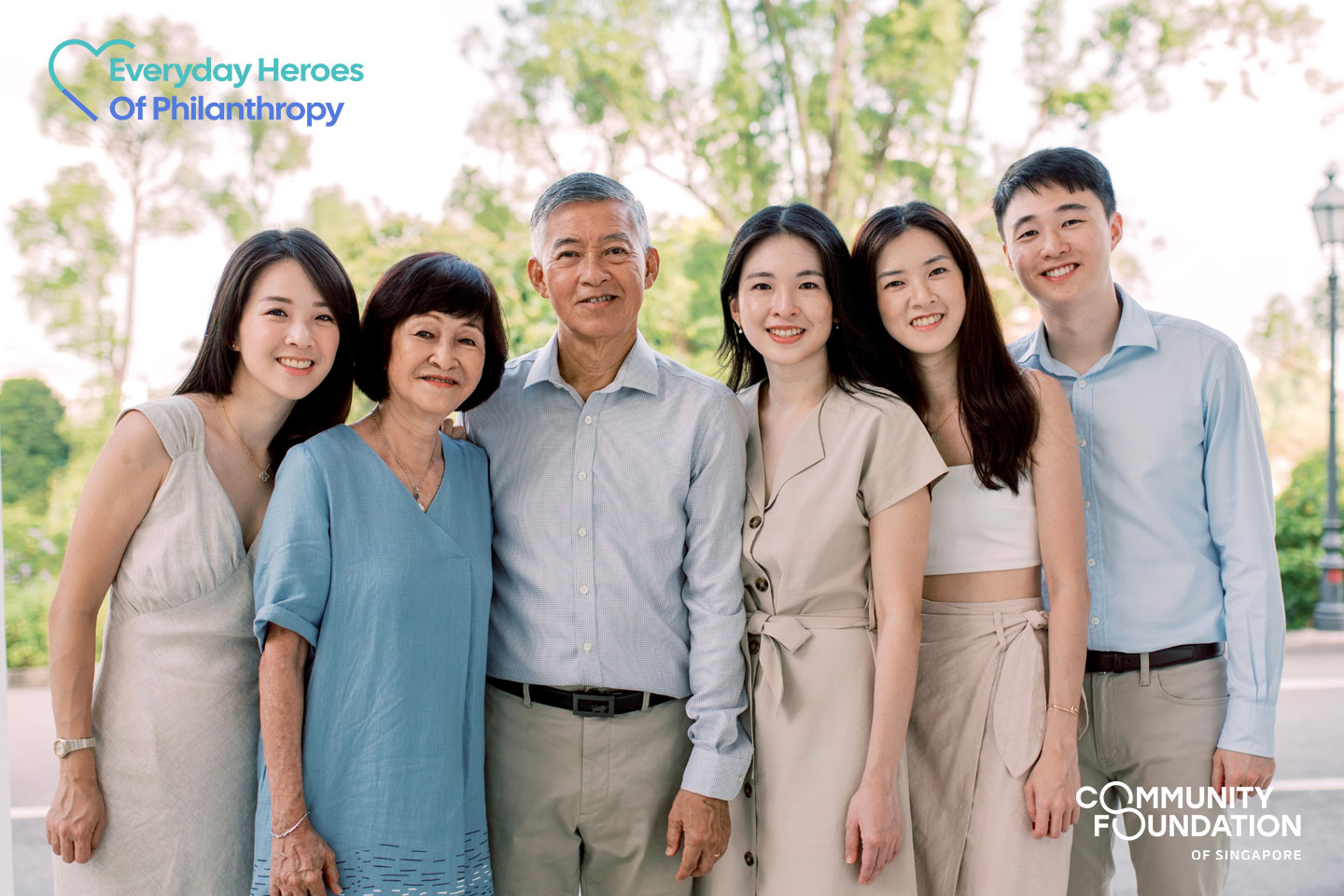How Collaborative Philanthropy is Powering Support for Mental Health


No friends, no job, and no confidence. That’s what one person grappled with when he first attended a Growth Circle run by Growth Collective SG. By the end of the year, he had built some friendships and was weighing new career opportunities. His self-worth soared.
Growth Circles are a powerful means to open up mental wellness support to anyone in need. With the backing of philanthropic dollars and like-minded partners from the public, private and nonprofit sectors, Growth Collective SG is sparking a movement for accessible well-being that is gaining momentum.
Growth Collective SG grew out of the Community Mental Health Champions initiative. A collaborative project by CFS and Empact that was generously funded by the Johnson & Johnson Foundation, it began in 2021 with the aim of building a pool of people equipped to help others access mental health support. Mental wellbeing is one of five focal areas that CFS has identified as a priority for grant making in the coming years.
Growth Collective SG is made up of the following organisations:
- Growthbeans, a social enterprise that provides coaching-infused programs, products and services to equip individuals and leaders with self-awareness, compassion andkey people skills to grow resiliently, connect authentically, and give meaningfully for their well-being.
- SG Assist , which supports caregivers and their loved ones through an app and volunteers;
- Singapore University of Social Sciences (SUSS), whose mission is to transform society through applied social science and to inspire lifelong education;
- Psychosocial Initiative, a social enterprise that promotes psychological first aid skills and emotional/mental health literacy awareness;
- Empatho, a consultancy that provides social, emotional and mental wellness training to organisations and schools and wants to shift the mental health paradigm from a remedial model to a preventive one;
- Singapore Anglican Community Services, the community service arm of the Diocese of Singapore;
- Community of Peer Support Specialists, (CPSS) is a ground-up collective made up of professionally trained and certified Peer support specialists interested in growing Singapore’s mental health peer support movement. They leverage on their lived experiences to provide support to persons with mental health challenges while engaging them in clinical, community and workplace settings.
The idea of Growth Circles for mental health came from Growthbeans, which has been running sharing circles and coaching circles since 2015. These are psychological safe spaces for sharing, reflecting and building meaningful relationships. Each Growth Circle is led by a trained facilitator, who empower individuals through active listening and asking effective questions. “Mental health is a state of wellbeing. To empower individuals to better support their personal wellbeing, we want to provide them with more than a safe space to belong. We want to provide a platform for people to gain self-awareness and perspectives, and have a guided way to practise and grow their person-centric skills with the support of others. And, we have seen the impact that Growth Circles have made,” says Shane Yan, a co-founder of Growthbeans and an ICF certified coach. Shane is the Chair of the steering committee of Growth Collective SG and sits on the steering committee of the SG Mental Well-Being Network.
Drawing upon the varied resources, experiences and competencies of its members who cover the spectrum of the mental health continuum, Growth Collective SG came up with a framework to support four aspects of personal growth – social, psychological, emotional, and spiritual growth. It then set about training Growth Facilitators to lead the Growth Circles. They set boundaries, offer psychological first aid and help participants develop soft skills such as questioning skills, empathy, compassion and emotional intelligence.
Growth Circles typically comprise four to five individuals and take place in person or online. The very first one, held at SUSS, garnered a good response from curious students. “Many people feel burnt out or overwhelmed. They appreciate the friendships made, opportunity to share and process their emotions, the new perspectives gained to lift their emotional and mental burden, and the awareness that they are not alone” says Shane. There is now a waitlist for many of these sessions. And, it is attracting a growing diversity of people of different ages, walks of life, and life experiences.
Even more encouragingly, the practice of and learnings from these Growth Circles are being incorporated into the curriculum at SUSS, for undergraduates studying psychology while postgraduate students will undergo the Growth Facilitators training. Longer-term, Shane says the goal is to build a sustainable, scalable offering that bolsters not just mental wellbeing, but employability, as well as community resilience.
“We are grateful to Johnson & Johnson Foundation. Without their funding, the dream would have taken much longer to materialise,” says Shane. And ultimately, its success has hinged on different stakeholders across the charitable, government and private philanthropic sectors working together to engender change.
“A collective allows a diverse group of stakeholders to work together to reinforce each other’s efforts and achieve more impact. Through Johnson & Johnson Foundation’s funding, CFS took on a backbone role in the collective to align activities, establish shared measurement practices, while mobilising and managing resources,” says CFS.
Growth Collective SG has a promising pipeline of projects. This includes running Growth Circles for residents of Nee Soon South Community Centre and Yuhua Community Club, a partnership with the National Gallery to combine Growth Circles with their How to Art with Friends program for its upcoming Wellness Festival, and an MOU with the Institute for Human Resource Professionals to hone skills for workplace wellbeing.
Enabling community well-being takes an entire ecosystem working together in partnership. Growth Collective SG has officially launched its Together, We Grow movement on 1 April 2023. Join the movement, collaborate with us, and bring Growth Circles to every part of Singapore. Find out more here.
To find out more about how CFS empowers collaborative philanthropy, click here.
No friends, no job, and no confidence. That’s what one person grappled with when he first attended a Growth Circle run by Growth Collective SG. By the end of the year, he had built some friendships and was weighing new career opportunities. His self-worth soared.
Growth Circles are a powerful means to open up mental wellness support to anyone in need. With the backing of philanthropic dollars and like-minded partners from the public, private and nonprofit sectors, Growth Collective SG is sparking a movement for accessible well-being that is gaining momentum.
Growth Collective SG grew out of the Community Mental Health Champions initiative. A collaborative project by CFS and Empact that was generously funded by the Johnson & Johnson Foundation, it began in 2021 with the aim of building a pool of people equipped to help others access mental health support. Mental wellbeing is one of five focal areas that CFS has identified as a priority for grant making in the coming years.
Growth Collective SG is made up of the following organisations:
- Growthbeans, a social enterprise that provides coaching-infused programs, products and services to equip individuals and leaders with self-awareness, compassion andkey people skills to grow resiliently, connect authentically, and give meaningfully for their well-being.
- SG Assist , which supports caregivers and their loved ones through an app and volunteers;
- Singapore University of Social Sciences (SUSS), whose mission is to transform society through applied social science and to inspire lifelong education;
- Psychosocial Initiative, a social enterprise that promotes psychological first aid skills and emotional/mental health literacy awareness;
- Empatho, a consultancy that provides social, emotional and mental wellness training to organisations and schools and wants to shift the mental health paradigm from a remedial model to a preventive one;
- Singapore Anglican Community Services, the community service arm of the Diocese of Singapore;
- Community of Peer Support Specialists, (CPSS) is a ground-up collective made up of professionally trained and certified Peer support specialists interested in growing Singapore’s mental health peer support movement. They leverage on their lived experiences to provide support to persons with mental health challenges while engaging them in clinical, community and workplace settings.
The idea of Growth Circles for mental health came from Growthbeans, which has been running sharing circles and coaching circles since 2015. These are psychological safe spaces for sharing, reflecting and building meaningful relationships. Each Growth Circle is led by a trained facilitator, who empower individuals through active listening and asking effective questions. “Mental health is a state of wellbeing. To empower individuals to better support their personal wellbeing, we want to provide them with more than a safe space to belong. We want to provide a platform for people to gain self-awareness and perspectives, and have a guided way to practise and grow their person-centric skills with the support of others. And, we have seen the impact that Growth Circles have made,” says Shane Yan, a co-founder of Growthbeans and an ICF certified coach. Shane is the Chair of the steering committee of Growth Collective SG and sits on the steering committee of the SG Mental Well-Being Network.
Drawing upon the varied resources, experiences and competencies of its members who cover the spectrum of the mental health continuum, Growth Collective SG came up with a framework to support four aspects of personal growth – social, psychological, emotional, and spiritual growth. It then set about training Growth Facilitators to lead the Growth Circles. They set boundaries, offer psychological first aid and help participants develop soft skills such as questioning skills, empathy, compassion and emotional intelligence.
Growth Circles typically comprise four to five individuals and take place in person or online. The very first one, held at SUSS, garnered a good response from curious students. “Many people feel burnt out or overwhelmed. They appreciate the friendships made, opportunity to share and process their emotions, the new perspectives gained to lift their emotional and mental burden, and the awareness that they are not alone” says Shane. There is now a waitlist for many of these sessions. And, it is attracting a growing diversity of people of different ages, walks of life, and life experiences.
Even more encouragingly, the practice of and learnings from these Growth Circles are being incorporated into the curriculum at SUSS, for undergraduates studying psychology while postgraduate students will undergo the Growth Facilitators training. Longer-term, Shane says the goal is to build a sustainable, scalable offering that bolsters not just mental wellbeing, but employability, as well as community resilience.
“We are grateful to Johnson & Johnson Foundation. Without their funding, the dream would have taken much longer to materialise,” says Shane. And ultimately, its success has hinged on different stakeholders across the charitable, government and private philanthropic sectors working together to engender change.
“A collective allows a diverse group of stakeholders to work together to reinforce each other’s efforts and achieve more impact. Through Johnson & Johnson Foundation’s funding, CFS took on a backbone role in the collective to align activities, establish shared measurement practices, while mobilising and managing resources,” says CFS.
Growth Collective SG has a promising pipeline of projects. This includes running Growth Circles for residents of Nee Soon South Community Centre and Yuhua Community Club, a partnership with the National Gallery to combine Growth Circles with their How to Art with Friends program for its upcoming Wellness Festival, and an MOU with the Institute for Human Resource Professionals to hone skills for workplace wellbeing.
Enabling community well-being takes an entire ecosystem working together in partnership. Growth Collective SG has officially launched its Together, We Grow movement on 1 April 2023. Join the movement, collaborate with us, and bring Growth Circles to every part of Singapore. Find out more here.
To find out more about how CFS empowers collaborative philanthropy, click here.
- Related Topics For You: CHARITY STORIES, COLLABORATION, COMMUNITY IMPACT FUND, DONOR STORIES, GROWTH COLLECTIVE, MENTAL WELLBEING, PARTNERSHIP STORIES, STORIES OF IMPACT



